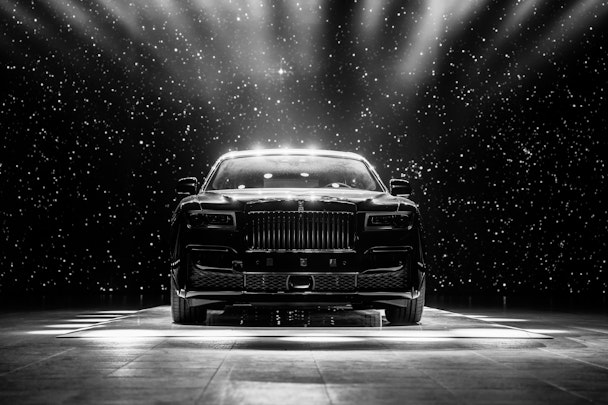Showroom tech is driving a new era of automotive marketing, but are we there yet?
For The Drum’s travel, tourism and auto focus week, Jaywing’s Chris Dowse test drives a decade’s worth of technological progress in car-buying customer journeys. Has all the tech made things better?

Tech has been remaking the car showroom experience piece by piece. But are consumers grateful? / Akram Huseyn via Unslpash
Back in 2010, journalist Susan Orlean’s New Yorker piece Wheels declared a new era in car buying: “You can find out anything you want about a car now, and especially every bit of information about the price, without relying on the dealers.”
Now, more than a decade later, the physical-dealership-and-salesperson experience is just one of many potential touchpoints an automotive brand will have with a consumer during their purchase.
In some cases, like the DTC (‘direct-to-consumer’ or ‘diagnostic trouble code’, take your pick) brands Tesla and Polestar, you might never cross the threshold of a shiny floored showroom at all.
Explore frequently asked questions
The automated automative customer journey
It isn’t just the slick battery-powered new-age brands who have embraced the shifting behavior of consumers.
Plenty of iconic marques who have dominated the roads for decades have also realized that car purchasing journeys have been growing extra steps. Naturally, though, technology has concurrently worked to create a world in which Orlean’s words have never been truer.
The integration of digital and physical showrooms now means that a potential customer can be greeted by a salesperson who already knows exactly the model, features, potential extras, and even color that a customer is looking for.
The capture of this data is valuable for brand and consumer alike. The brand can analyze the popularity of different models and specs that customers express an interest in, versus what they end up purchasing. For their part, customers are met with a more personalized (and potentially less frustrating or daunting) showroom experience, helping them to feel they are getting something more valuable than the standard showroom patter.
Advertisement
A tailored journey
But we still have to get people to the showroom. So how can the advertising landscape continue to evolve to support this journey? There will always be a place for the emotive hero TV and cinema ads for telling those stirring brand stories of adventure, excitement, safety and durability. Beyond that, though, at the model level, we now have more consumer targeting data than ever before, opening the door to more tailored ads that match cars to people.
This is where all that showroom and sales data comes into its own, becoming a valuable asset in knowing which consumer buttons to press. Combined with the capability of digital channels to allow multi-variant messaging at scale, those attention-grabbing, emotionally compelling TV spots can be bolstered and supported with a compelling mix of ‘reasons to believe’ that feel more personal and relevant to how different customers want to drive.
All this enhanced data capture also leads to marketing efficiency and continued refinement of the marketing mix. Tracking the interaction and engagement with different ads in different channels over time allows us to understand how each penny of our marketing spend is nudging the customer closer to that final purchase.
Such good consideration-purchase understanding of where people need those nudges and where they might wobble or reconsider means brands can balance their advertising investment in the right places and know the perfect time to send a well-placed email.
Advertisement
Has the tech made us more likely to buy?
Meanwhile, augmented and virtual reality have (finally, arguably) moved beyond gimmicks into the realm of usefulness. Customers are now able to fully engage with a car before they’ve even gripped the steering wheel or smelled the new leather.
Audi has created fully immersive VR experiences that allow customers to walk around their cars and even take virtual test drives. Mercedes has used augmented reality to allow show different models in real-world settings like their driveways, giving prospective buyers a digital taste of ‘neighbor envy’.
And as conversation moves to AI we’re already seeing innovation and sophistication, with chatbots, for example, that can offer encyclopedic knowledge of every make and model to answer customer queries in real-time. Ford’s chatbots, on top of this detailed product expertise, can also schedule test drives, and – of course! – capture all that data for analysis and improvements.
So does all this make the car buying journey less painful for consumers? That probably depends on how they feel about parting ways with a significant sum of money. What it certainly has done is provide the potential for a far more informed, relevant and effective journey.
For more on travel, tourism and the auto industry, head over to The Drum’s dedicated focus week hub.
Suggested newsletters for you
Content by The Drum Network member:

Jaywing
At Jaywing, we’ve made it our mission to help clients establish concrete foundations in a world of shifting sands. As a data-powered integrated agency, we bring...
Find out more